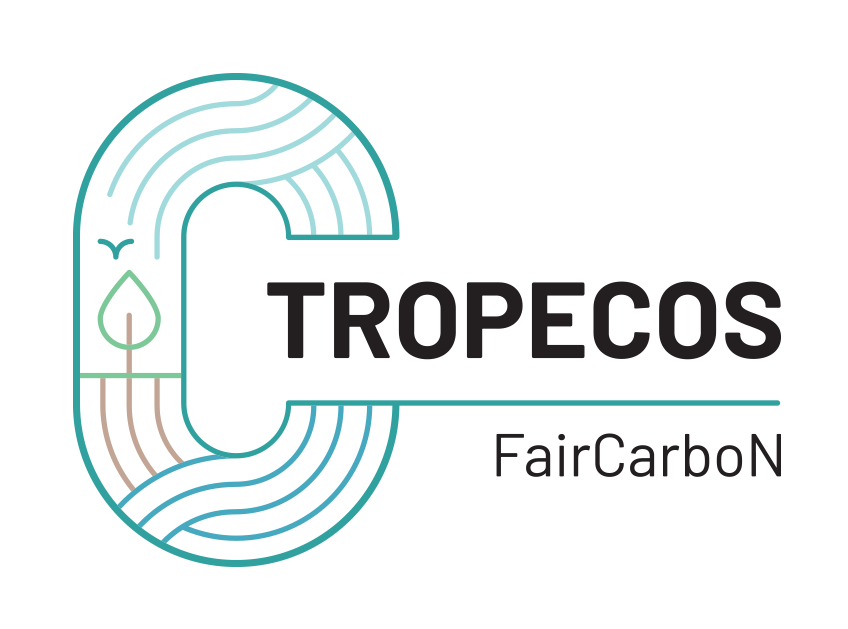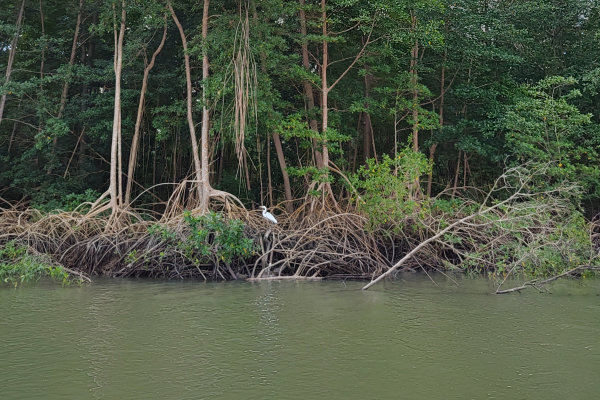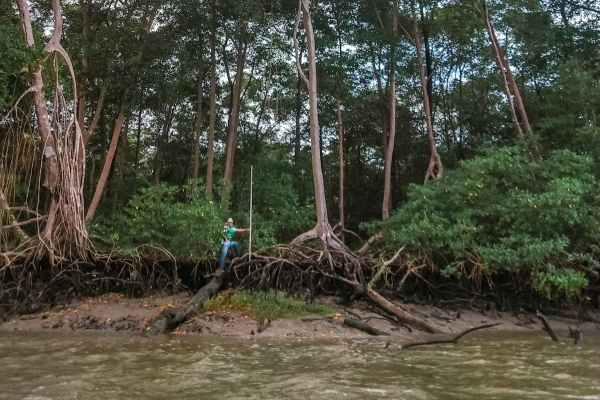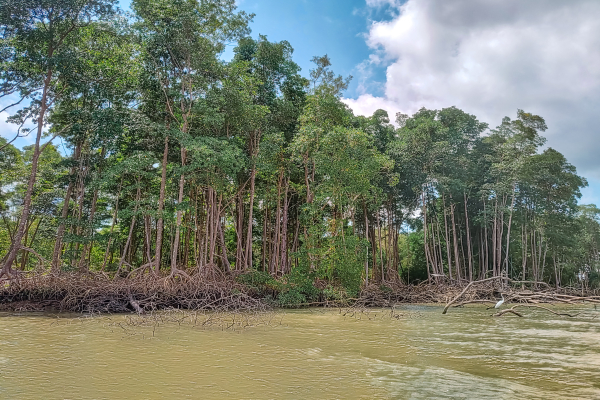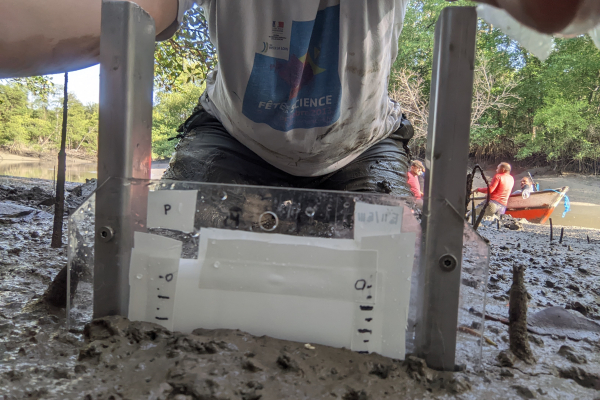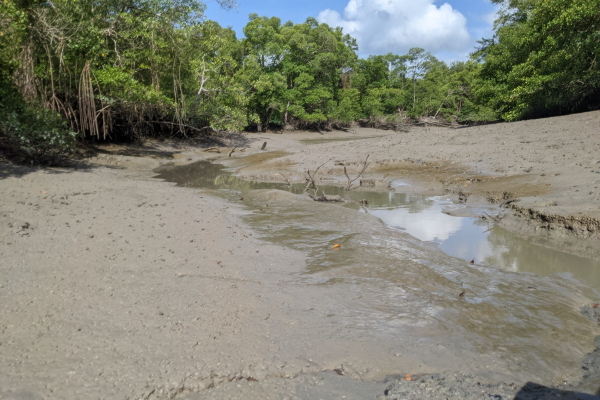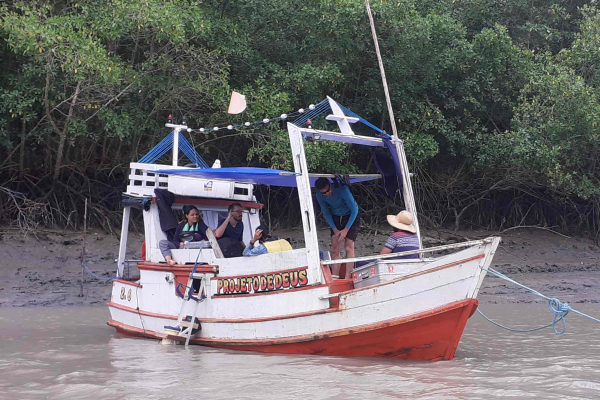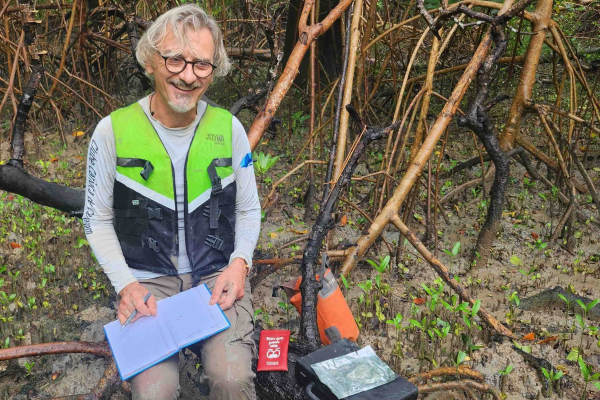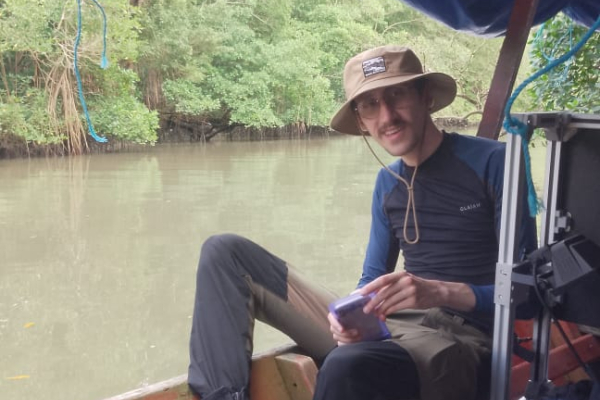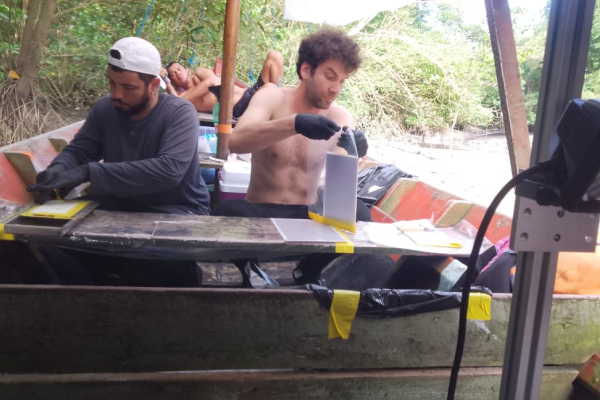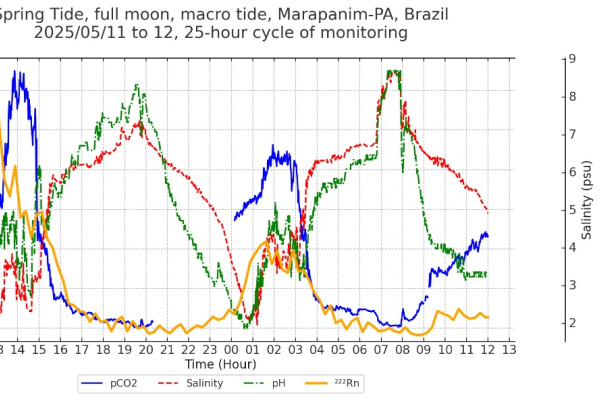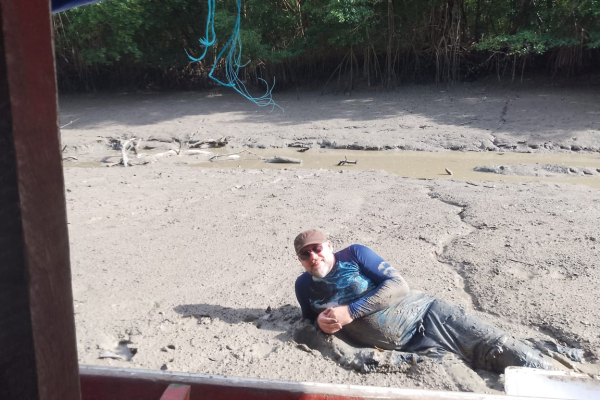TROPECOS Research in Brazil Pará is made in collaboration with Museu Paraense Emilio Goeldi and Universidade Federal do Para, Bélem.

Zoobotanical park of the Pará Emílio Goeldi Museum (Photo Christiene Matos)
North coast of Brazil (known as the Brazilian Amazon coast) is considered the largest continuous and best-preserved mangrove forest in the world.
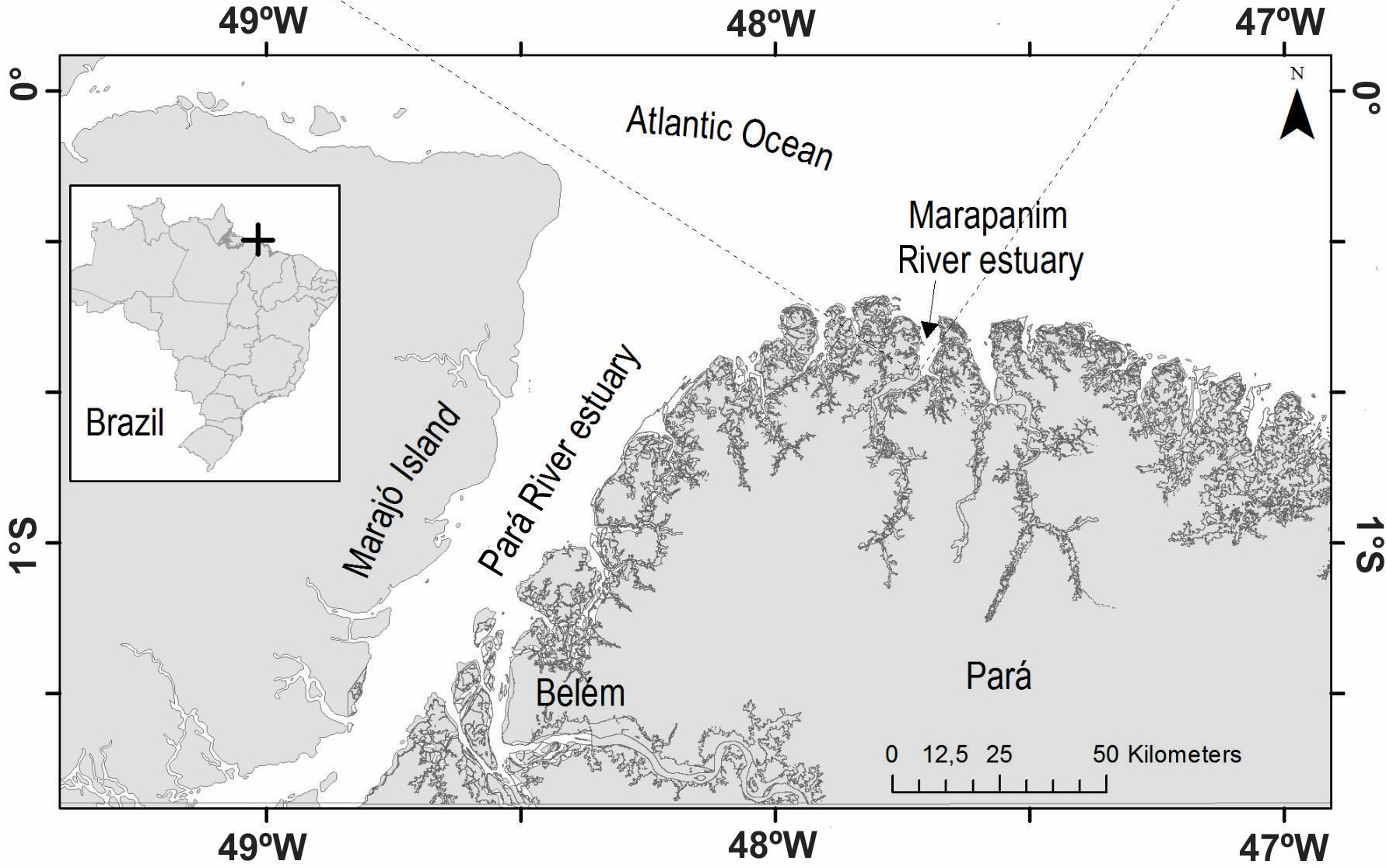
The mangroves of the Marapanim River estuary are part of this extensive range of mangroves on the Brazilian north coast, which present minimal anthropogenic impact. The trees are tall (up to approximately 35 m), generally distributed in mixed forests of Rhizophora spp. and Avicennia germinans.
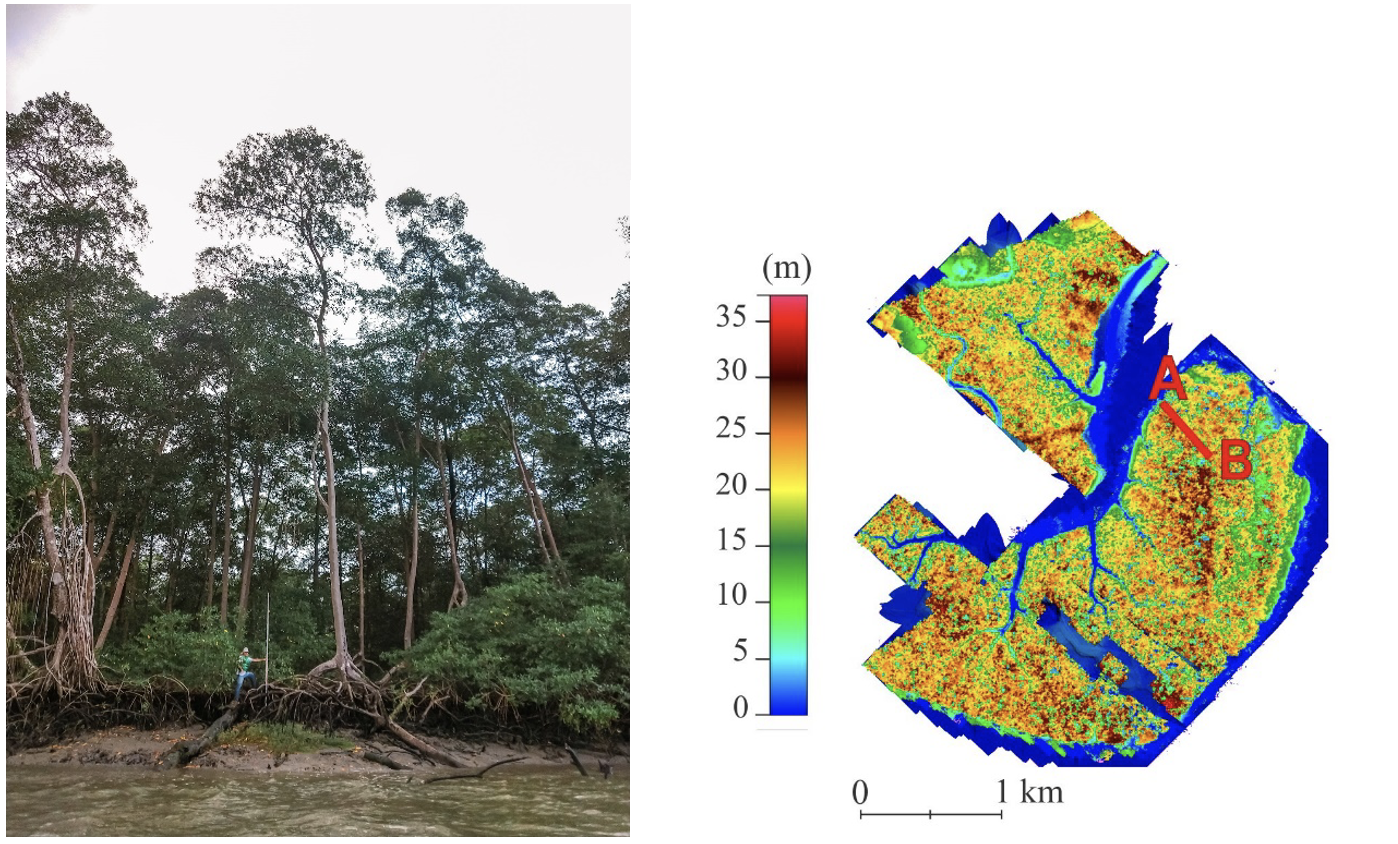
Marapanim mangrove and digital vegetation height model (Matos et al. 2020).
The coastal region of Pará is characterized by a tropical climate, and the process of sedimentary organic matter (OM) degradation in pristine mangroves of Marapanim are influenced by Amazonian seasonal rainfall patterns (Berrêdo et al. 2016, Matos et al. 2022). The higher terrestrial OM input, a product of a dense and tall mangroves trees, contributed to higher carbon accumulation rates in the Marapanim mangrove tidal creeks, which were slightly higher than the global averages estimated for within mangrove forests (Matos et al. 2020).

Sediment collection in Marapanim Mangrove (Photo Berrêdo)
Matos, C.R.L., Berrêdo, J.F., Machado, W., Sanders, C.J., Metzger, E., Cohen, M.C.L., 2020. Carbon and nutrient accumulation in tropical mangrove creeks, Amazon region. Mar. Geol. 429 https://doi.org/10.1016/j.margeo.2020.106317
Berrêdo, J.F., Costa, M.L.da, Vilhena, M.S.P., Matos, C.R.L., 2016. Changes in physicochemical properties of mangrove sediments under Amazonian climatic regime. Bol. do Mus. Para. Emílio Goeldi Ciências Nat. 11, 313–328.
